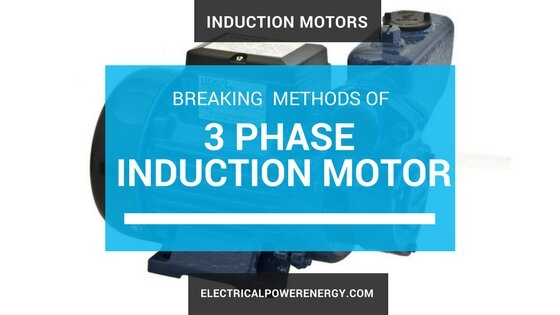 Breaking means the intentional reduction of speed of the particular motor. Normally this Three Phase Induction Motor Breaking Methods done by causing the motor to produce the reverse torque. There are three types of basic techniques are apply for the breaking of induction motors such as following.
Breaking means the intentional reduction of speed of the particular motor. Normally this Three Phase Induction Motor Breaking Methods done by causing the motor to produce the reverse torque. There are three types of basic techniques are apply for the breaking of induction motors such as following.
- Plugging breaking
- Dynamic braking
- Regenerative braking
Following are some simple introduction to these Three Phase Induction Motor Breaking Methods which is use widely.
Plugging Braking
In this braking method to initiate the break normally interchange the two of the supply terminals to the motor. This causes the direction of rotating magnetic field to reverse and thereby torque is get reduced.
Dynamic Induction Motor Breaking Methods
Dynamic braking guarantees that the motor always comes to zero specced safely if we keep applying the break. This is clear against plugging breaking where the motor will continue to accelerate in reverse direction unless this supply is cut off (& possibly mechanical brake applied) as the motor come to zero speed.
To initiate breaking it’s essential to disconnect the stator terminals form the three-phase supply and reconnect them across a DC voltage supply. This causes the stator to step up a static magnetic field (non-rotating) the consequence will be the negative torque on the rotor to decelerate the rotor stored kinetic energy in the rotor is reduced as heat in the rotor itself due to three phase current induced in the rotor winding.
Regenerative Braking of Induction Motor
When regenerative brake apply the kinetic energy stored in the rotor is sent back to the source. This enhances energy efficiency, reduce the motor heating. To apply the regenerative braking we need a bi-directional power electronic converter. To raise speed we instruct the controller to pass energy to the motor, to break we instruct the controller to pass energy from the motor to supply.



